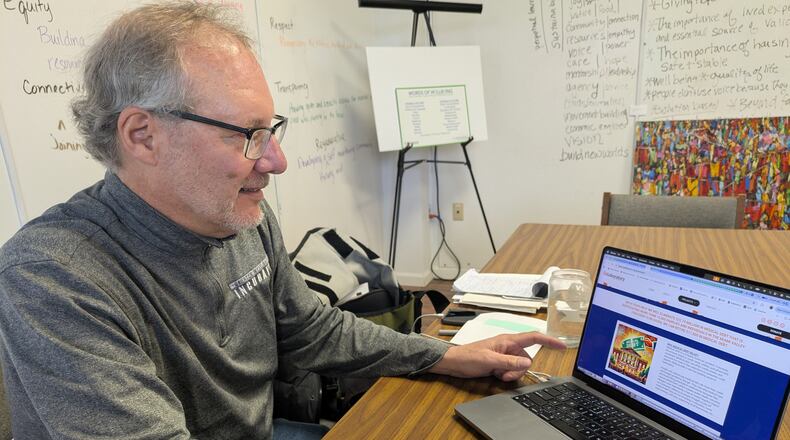In teaming with the national nonprofit Undue Medical Debt, the organizations plan to purchase $22.7 million in medical debt of more than 13,000 qualifying residents in the Miami Valley for $127,650 after a 10-week fundraising campaign.
Every $1 donated relieves $178 in medical debt, Benkendorf said.
Montgomery and Clark counties each hold 40% of the $22.7 million medical debt, according to the Collaboratory. The remainder is split between Darke, Greene, Miami, Preble and Shelby counties.
The campaign was inspired in part by a similar undertaking by the Church of the Cross United Methodist in Kettering in 2024. Its congregation eliminated $2 million in medical debt impacting approximately 2,600 area residents, Benkendorf said.
How does this work?
“A lot of people think it’s a scam,” said Daniel Lempert, vice president of marketing and communications at Undue Medical Debt.
People cannot apply to have their medical debt erased as part of this initiative. Through its debt-acquisition practices, Undue Medical Debt hones in on the debt of individuals who are earning at or below four times federal poverty or those for whom medical debt is 5% or more of their annual incomes.
Undue Medical Debt can then purchase that medical debt after an entity in the target area, like the Collaboratory, raises the funds to buy it.
“We’re just taking advantage of the for-profit debt landscape. All debts can be bought and sold very cheaply. Often for pennies or less on the dollar,” Lempert said.
Medical debt tends to be the cheapest debt, he said. Compared to credit card or payday loan debt, medical debt is the least likely to yield someone paying it.
By selling the debt, creditors are able to get a portion of the debt that is owed if the person with the medical debt is unable to pay.
“Medical debt isn’t like someone overextending themselves and buying a car they can’t afford ... These are debts of necessity,” Lempert said.
Undue Medical Debt will send those impacted a notice in the mail with its branding on the letter after the debt has been erased. For more information on this national nonprofit, visit unduemedicaldebt.org.
Medical debt and your credit
Medical debt is the leading cause of bankruptcy in the U.S. with more than 66% of people in a 2019 survey indicating medical debt contributed to the bankruptcy, according to a study in the American Journal of Public Health.
“Medical debt is burdensome on so many levels,” Benkendorf said.
It’s a financial burden, but it also weighs on people physical and mental health, he said.
“Individuals are getting burdened with medical debt, and for a lot of our communities, it’s holding so many people back, and that hurts all of us,” Benkendorf said. “We all pay a price when we have people who aren’t able to realize their full potential.”
Medical debt could affect people’s credit scores. It accounted for most of the collections on consumer credit reports, Benkendorf said.
“It has implications on your ability to get a mortgage or to buy a car or other things,” Benkendorf said.
On Jan. 7, the Consumer Financial Protection Bureau finalized a regulation that bans the inclusion of medical bills on credit reports used by lenders. It also prohibits lenders from using medical information in their lending decisions.
The rule will be effective 60 days after publication in the Federal Register, which was on Jan. 14. The CFPB has been sued twice in Texas on this regulation, so it’s unclear if future court rulings will impact this rule.
If you want to help
Other organizations can start their own fundraisers to contribute to the Collaboratory or people can donate directly to the Collaboratory.
The Collaboratory and its partners are seeking congregations, service clubs, professional associations and community groups who are interested in running their own campaigns similar to Church of the Cross.
To donate or to find more information on how to start your own campaign, visit daytoncollaboratory.org/medicaldebt.
About the Author

